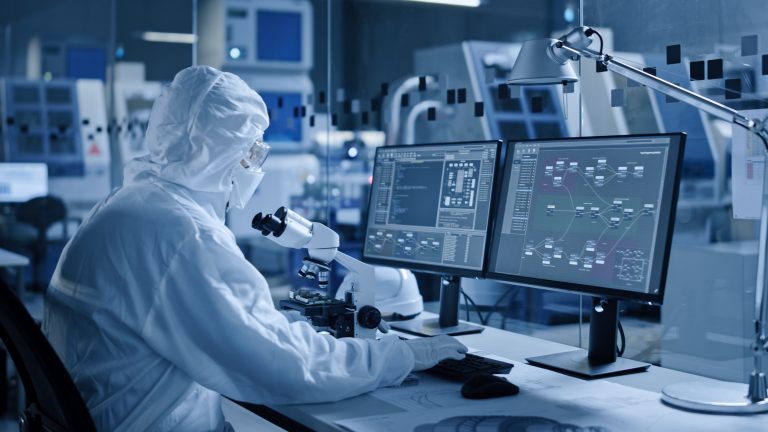Let’s Get Going: Advanced Energy Embraces Digital Transformation
已发布 十月 09, 2018 由 Isabel Yang
Two of my favorite quotes are from the great Andrew Grove: “we were just going about our business then came along the internet” and “only the paranoid will survive”. The first quote speaks to the tsunami-like forces of innovation that can completely transform all industries and literally change the way we live our daily lives. Retail and financial services have been the leading industries leveraging digital transformation to provide more value to their customers. We, as consumers, reap the benefits in the form of online purchases and banking, digital assistants such as Alexa or Siri, and the smart connected home are just a few proof points.
The second quote speaks to the speed of change and why an innovative company cannot be complacent. The industries that Advanced Energy serves, and AE itself, traditionally are more cautious. But, in order to serve our clients better and not be left behind by our competition, it’s time to embrace digital transformation.
Where Do We Start?
As a critical subcomponent supplier to OEMs in the semiconductor and industrial manufacturing space, we must enable our partners and customers to accomplish near zero downtime and increased supply chain efficiency. We often hear about Industry 4.0, what is it exactly? The best explanation I have found is that of the intersection of Industrial IoT (IIoT) and Cyber Physical Systems (CPS). As a part of IIoT, our subcomponents should be interconnected as sub-systems in the system-of-systems factory, where self-diagnosis and troubleshooting capabilities detects predictive failure and enables preventive maintenance - and hence facilitating continuous operation. Furthermore, in the factory of the future, not only are the system-of-systems fully interconnected, but they are centrally managed and operationally represented by virtual “digital twins”, hence the Cyber Physical Systems. Our sub-system of components would naturally be part of this CPS. What this means is that our sub-system of components must be designed to be compliant with communication protocols that will enable intra (our own components) and inter (non-AE components) connectivity. Our sub-systems also must be modular and enabled for remote firmware or application updates.
The extent of our influence is industry-dependent. Some industries, for example semiconductor manufacturers, already have done a lot to optimize their factories; some have data and artificial intelligence scientists in-house that are machine learning experts. For these industries, the data from the tools that our partners provide can help make factories even smarter. Other industries such as industrial glass coatings, we can help drive digital transformation due to the tremendous value we can provide with connected subsystems and data driven insights.
In a nutshell, our products must be able to communicate with multiple interfaces, be smart themselves, and operate as a system. Finally, we need to practice what we preach and digitally transform our internal business processes, work smarter.
Connecting the Value Chain
I said before that increasing efficiency in the supply chain is another goal for customers. We share in that goal. I focus on this because I think that the value of digital transformation can be first realized in improved supply chain logistics. Blockchain will be the next technological disruption impacting multiple industries with retail supply chain logistics leading the way. Blockchain is a trusted and distributed ledger system where permissioned access enables validation and traceability of data in the value chain.
Two forms of trust are at play here. First, there’s the trust that’s essential for us to work with our partners, who have always been reluctant to share information for fear of exposing their intellectual property and trade secrets. Interconnected systems among stakeholders in the value chain almost by default enables that data to be seen by all of them. Blockchain security provides unprecedented insights into any data breeches. Identifying issues and blocking IP leakage is made easier. The second form of trust is in the data itself. Machine performance data gathered through interconnected systems and validated by a shared ledger can be trusted by everyone in the value chain. When a component is underperforming, AE should diagnose the issue, troubleshoot and repair remotely, or alert supply chain partners that the component will need to be taken out of service, returned for repair and replaced. Electronic contracts are executed instantly accelerating that process by orders of magnitude compared with current processes.
Let’s Begin
In a way, it’s easier to evolve technology than company culture – it’s often difficult for people to change the process that they have been using for years. How do we start? I think the first step is to recognize that big technology shifts are happening in the world, and not be afraid to admit that we need to transform how we innovate so we won’t be left behind.
One of our challenges is identifying innovation that really matters to AE within the remarkable volume of great innovative ideas that we have. Investing resources into what will most significantly impact technology innovation, cost reduction and process improvements is the starting point.
Every journey, even a journey of digital transformation, starts with a first step. Advanced Energy is taking that first step, and as CTO I’m looking forward to embarking on both technology and culture shifts that we are starting to make. Let’s get going.

.jpg?resizemode=force&maxsidesize=884)

